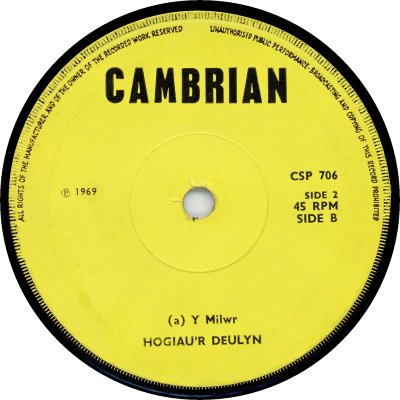
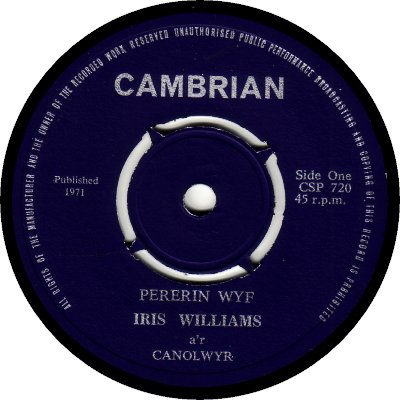
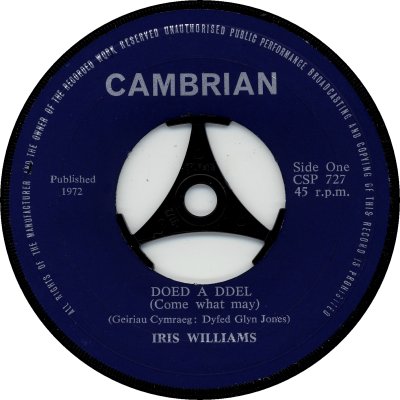
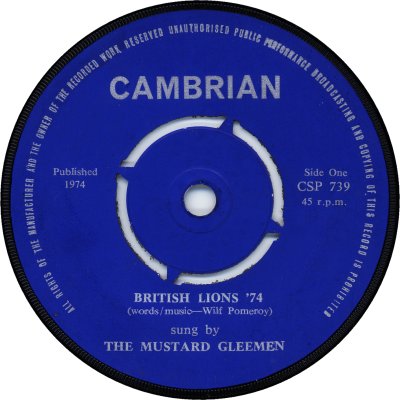
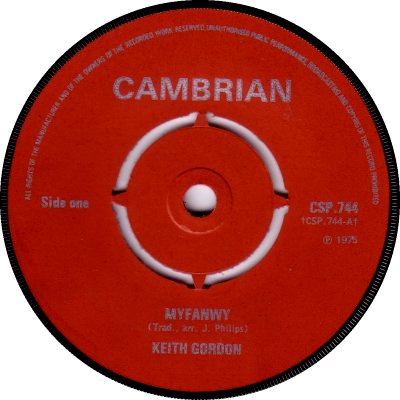
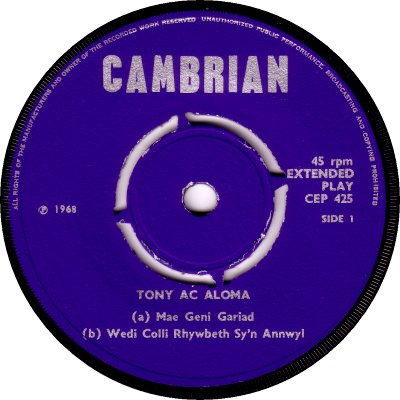
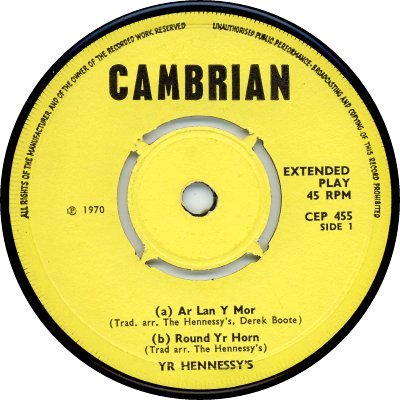
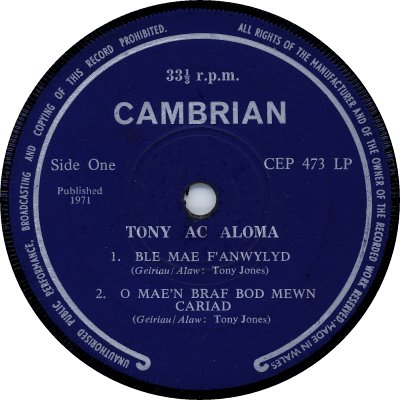
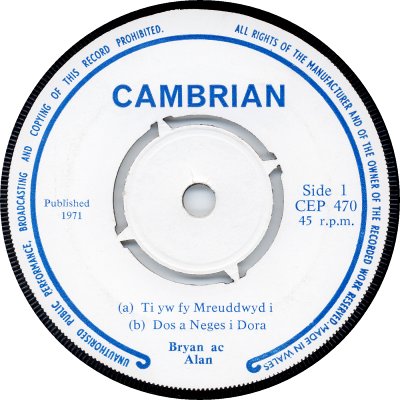
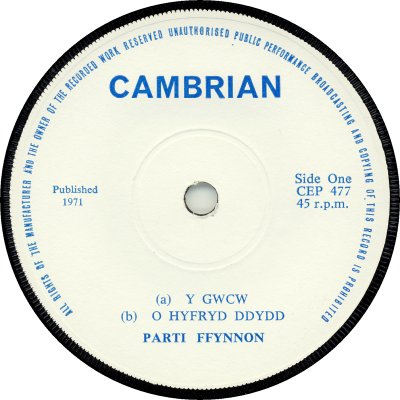
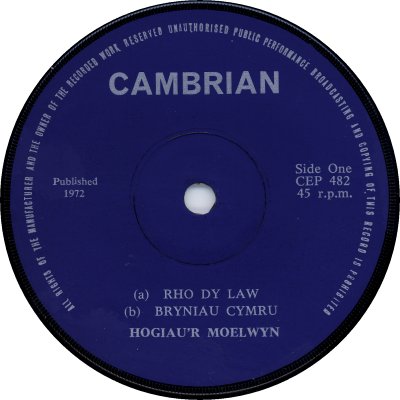
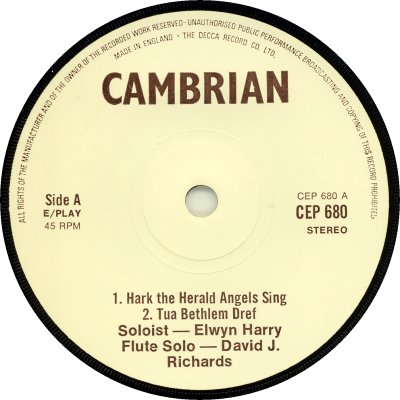
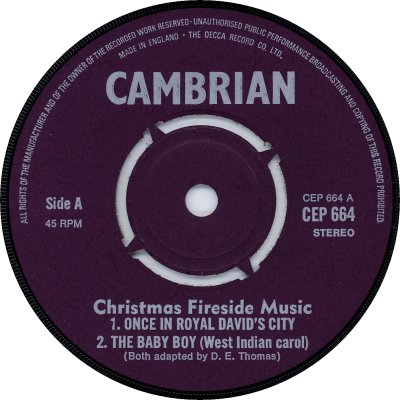
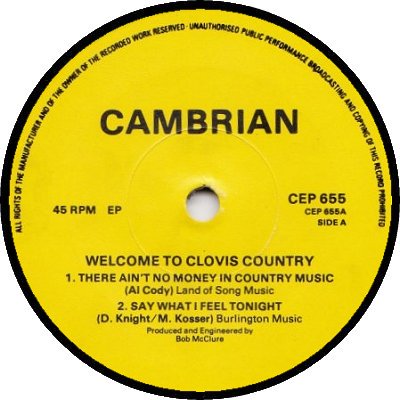
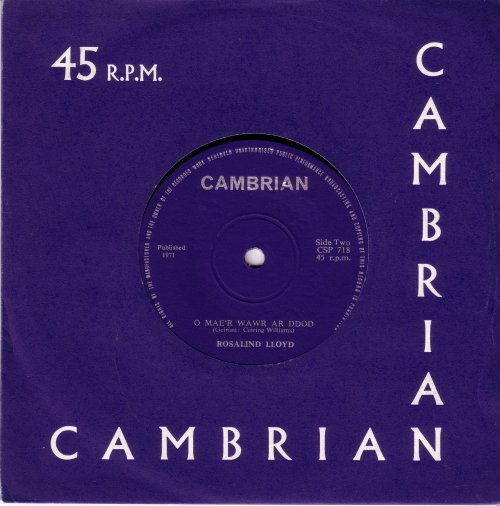
A Welsh-language label, based in Pontardawe and run by Josiah Jones. Like the other big labels in Wales - Qualiton, Wren, Welsh Teldec and Sain (q.v. all) - Cambrian didn't receive many mentions in the music industry press, but 'Record Retailer' of the 14th of August 1968 noted that it had been in existence for "just twelve months", that its records were pressed by Orlake, and that it distributed its own records via post. A few records were given wider distribution: 'RR' of the 15th of November 1969 noted that a single by Triban, 'Leaving On A Jet Plane' (CSP-707) was available through Lugton and H.R. Taylor, while the issue of the 7th of March 1970 said that the same two distributors were handling an album by The Hennessys. Later in the decade 'Music Master' gave Cambrian's distribution as being by Lugton and Selecta (1976), then by Selecta alone (1978, 1979). Cambrian appears to have issued records from 1967-c.80. Its main claim to fame as far as people outside Wales are concerned is that it put out several records by Mary Hopkin, who had a No.1 hit with 'Those Were The Days' in 1968 on the Beatles' Apple label (q.v.). Much of the company's output seems to have consisted of Folk or Choral songs or acoustic MOR Pop, though the final two or three years saw a certain amount of Country music in the catalogue. 'Buona Sera', the 'B' side of the Keith Gordon single 'Myfanwy' (CSP-744), is, surprisingly, Trad Jazz.
Cambrian labels came in several different colours but the basic design remained much the same. Its earliest 7" records were EPs; the first of them came out in 1967, and they were marked with the text 'Extended Play' until the end of 1970. The first singles appeared in 1969. Initially blue labels with a large logo were used (6); at some point in 1969 the colour changed to yellow (1, 6). In 1971 the colour reverted to blue; the font used for the logo shrank and the text around the circumference got slightly larger at the same time (2, 11). 1971 also saw the appearance of an occasional white label (10) along with a few singles that had rings around the circumference, and the words 'Made in Wales' at 5 o'clock; these came in both blue (8) and white (9). The shade of blue varied, sometimes becoming mid-blue rather than dark. Some popular records may be found with more than one kind of label, thanks to re-pressings. Not many 7" records were issued in 1974 but in 1975 a handful more singles appeared, this time with red labels (5). Three Christmas EPs had purple labels (13); I haven't been able to establish a date for them as yet, but that kind of label was used for albums from around 1978 into 1979, so I'd guess they were from 1978. Brown-on-cream labels (12) were used for albums in 1979; two undated EPs have them - CEP-680 and a reissue of CEP-404 - so it seems reasonable to guess that they were from that year. A couple of other late EPs have yellow labels with a small logo and no reference to Decca (14) - thanks to 7226Power of the 45cat site for permission to use that scan here. EPs had picture sleeves, as indeed did some of the singles. For those that didn't there was a company sleeve; the few examples that I have seen opened at the right-hand side if the wording was the right way up (15).
Numbering was in the CSP-700s for singles and mostly in the CEP-400s for EPs, though it appears to have started at CEP-399. At least four EPs were numbered in the CEP-600s; they were undated, but they were from late in Cambrian's life - it looks as though the numbers were taken from the main LP series (SCLP-600) and given the appropriate prefix. There was also an XX-120, which seems to have been a one-off. For a relatively short time there was a subsidiary label to Cambrian, called 'Glenwood' (q.v.). Manufacture seems to have been mainly done by Orlake, but CBS and occasionally Phonodisc pressings can be found, the latter sometimes resulting in records which had that company's large spindle hole (3). Decca LP and EP pressings had a reference to that company at 12 o'clock (12, 13), but the singles lacked it (5). Orlake records tended to have rather rough labels with a narrow smooth outer ring. The discography below covers the 1960s as well as the '70s, for once.
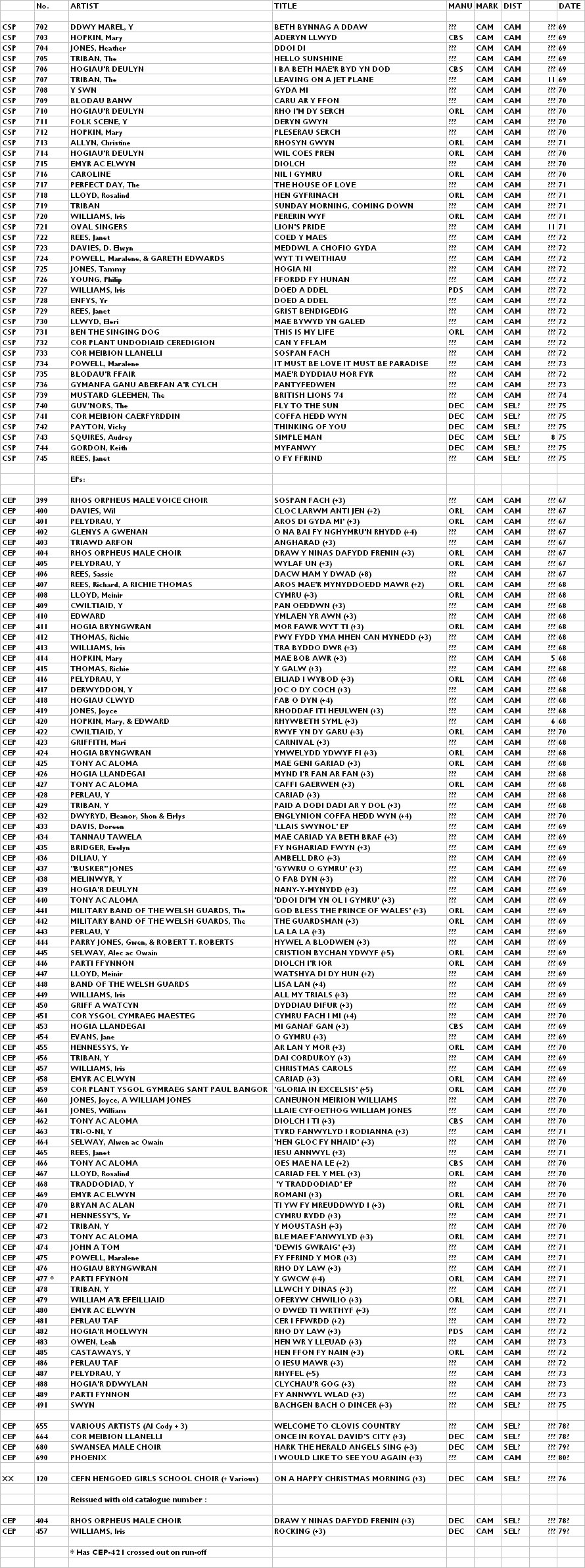


Copyright 2006 Robert Lyons.

